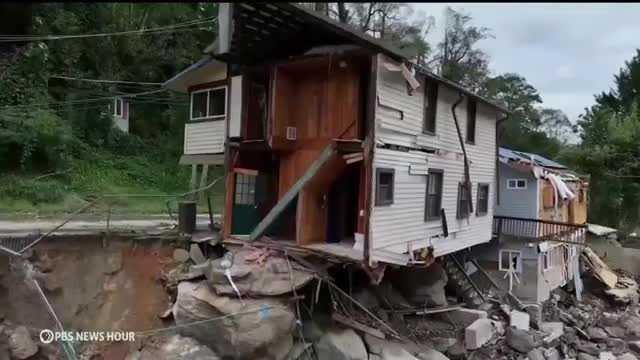Climate Havens Face Harsh Reality of Unavoidable Risks
This article was created by AI summarizing key points discussed. AI makes mistakes, so for full details and context, please refer to the video of the full meeting. Please report any errors so we can fix them. Report an error »

Communities once hailed as climate havens are now grappling with the stark reality that no place is immune to the impacts of climate change. This sentiment was underscored during a recent discussion featuring climate expert Alex Stefan, who highlighted the case of Asheville, North Carolina—a city often regarded as a refuge due to its temperate climate and abundant freshwater resources.
Stefan emphasized three critical points regarding the illusion of safety in the face of climate change. Firstly, he asserted that no location is entirely safe from climate-related disasters. Secondly, while some areas may be relatively safer than others, they are not exempt from potential catastrophic events. Lastly, he urged individuals and communities to proactively prepare for the inevitable challenges posed by a warming world.
The conversation also touched on the broader implications of climate change on housing and community planning. Stefan noted that many people are unwittingly moving into higher-risk areas, driven by outdated assumptions about safety and stability. He encouraged prospective movers to consult resources like FEMA risk maps to make informed decisions about where to live.
Moreover, Stefan pointed out the importance of evaluating not just the environmental risks of a location but also the resilience of its community and local governance. He warned that government policies, such as rebuilding coastal areas repeatedly after storms, may inadvertently encourage residents to return to hazardous zones, perpetuating a cycle of risk.
As climate change continues to reshape our understanding of safety and community, experts like Stefan stress the need for a paradigm shift in how individuals assess their living environments and prepare for the future.
Stefan emphasized three critical points regarding the illusion of safety in the face of climate change. Firstly, he asserted that no location is entirely safe from climate-related disasters. Secondly, while some areas may be relatively safer than others, they are not exempt from potential catastrophic events. Lastly, he urged individuals and communities to proactively prepare for the inevitable challenges posed by a warming world.
The conversation also touched on the broader implications of climate change on housing and community planning. Stefan noted that many people are unwittingly moving into higher-risk areas, driven by outdated assumptions about safety and stability. He encouraged prospective movers to consult resources like FEMA risk maps to make informed decisions about where to live.
Moreover, Stefan pointed out the importance of evaluating not just the environmental risks of a location but also the resilience of its community and local governance. He warned that government policies, such as rebuilding coastal areas repeatedly after storms, may inadvertently encourage residents to return to hazardous zones, perpetuating a cycle of risk.
As climate change continues to reshape our understanding of safety and community, experts like Stefan stress the need for a paradigm shift in how individuals assess their living environments and prepare for the future.
View full meeting
This article is based on a recent meeting—watch the full video and explore the complete transcript for deeper insights into the discussion.
View full meeting